Neng Ye
Processing Load Allocation of On-Board Multi-User Detection for Payload-Constrained Satellite Networks
Mar 06, 2024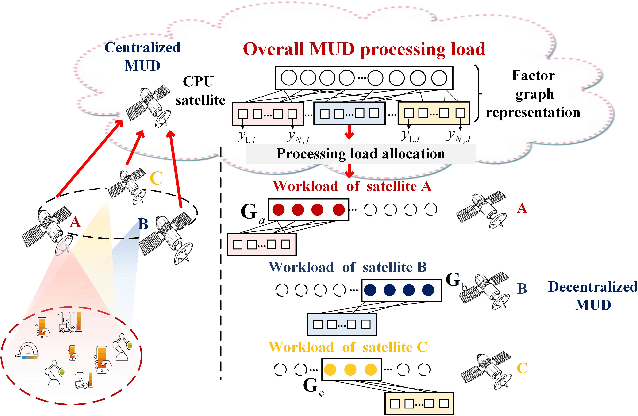
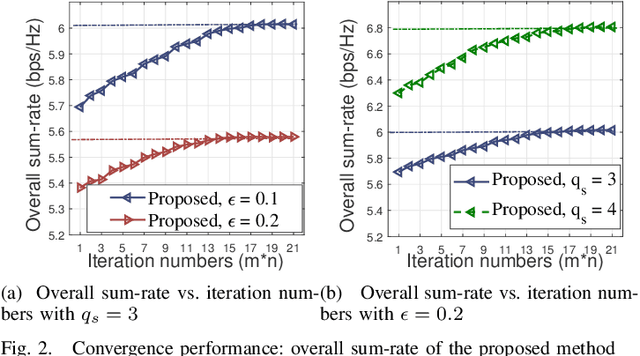
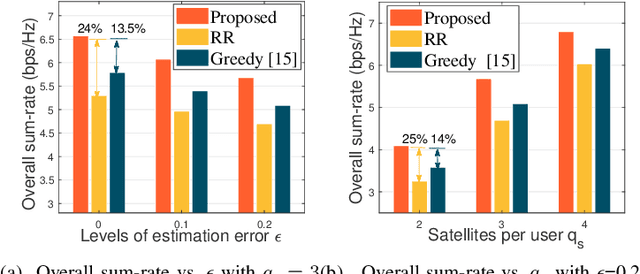
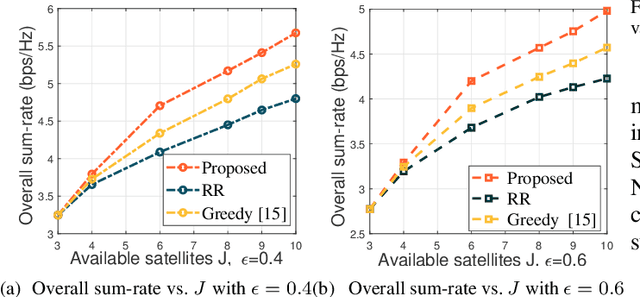
Abstract:The rapid advance of mega-constellation facilitates the booming of direct-to-satellite massive access, where multi-user detection is critical to alleviate the induced inter-user interference. While centralized implementation of on-board detection induces unaffordable complexity for a single satellite, this paper proposes to allocate the processing load among cooperative satellites for finest exploitation of distributed processing power. Observing the inherent disparities among users, we first excavate the closed-form trade-offs between achievable sum-rate and the processing load corresponding to the satellite-user matchings, which leads to a system sum-rate maximization problem under stringent payload constraints. To address the non-trivial integer matching, we develop a quadratic transformation to the original problem, and prove it an equivalent conversion. The problem is further simplified into a series of subproblems employing successive lower bound approximation which obtains polynomial-time complexity and converges within a few iterations. Numerical results show remarkably complexity reduction compared with centralized processing, as well as around 20\% sum-rate gain compared with other allocation methods.
Few-Shot Recognition and Classification of Jamming Signal via CGAN-Based Fusion CNN Algorithm
Nov 09, 2023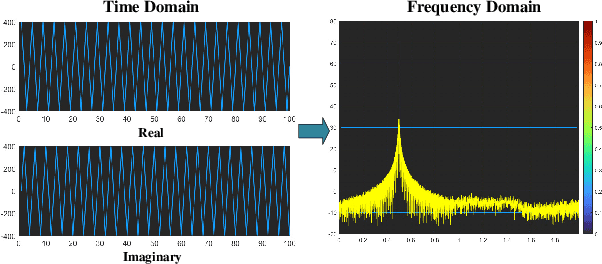



Abstract:The precise classification of jamming signals holds paramount significance in the effective implementation of anti-jamming strategies within communication systems subject to intricate environmental variables. In light of this imperative, we propose an innovative fusion algorithm based on conditional generative adversarial network (CGAN) and convolutional neural network (CNN) to solve the problem of difficulty in applying deep learning (DL) algorithms due to the instantaneous nature of jamming signals in practical communication systems. Compared with previous methods, our algorithm achieved an 8% improvement in accuracy even when working with a limited dataset. Unlike previous research, we have simulated real-world satellite communication scenarios using a hardware platform and validated our algorithm using the resulting time-domain waveform data. The experimental results indicate that our algorithm still performs extremely well, which demonstrates significant potential for practical application in real-world communication scenarios.
 Add to Chrome
Add to Chrome Add to Firefox
Add to Firefox Add to Edge
Add to Edge